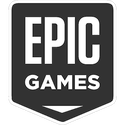
ASUS Republic of Gamers and ASUS Metaverse Announce the Release of the SL@SH206 Virtual Experience
ASUS Republic of Gamers (ROG) and ASUS Metaverse today announced the release of the SL@SH206 Web3 project, which creates a gamified experience and Web3 community where players can explore the virtual world and unleash their creativity. The AI-generated stories are supported by cloud technology from Taiwan Web Service Corporation (TWSC), a subsidiary of ASUS. SL@SH206 is targeting users worldwide and is expected to support both Chinese and English languages.
Innovative Web3 gaming ecosystem
SL@SH206 is the first step in collaboration on virtual experiences between ASUS Metaverse and the ROG brand; it is built using Web3 technology that immerses players in a cyberpunk world. Players take on the role of an amnesiac robot, ZEI-6, in a society where humanity has sought refuge in the virtual world. Through AI-generated content and a gamified experience, they will gradually uncover the secrets of the SL@SH206 world. Along the way, players can discover various virtual objects, trigger game events, and be able to get SL@SH206 digital collectibles by completing missions. Additionally, players can join the official Discord community, where they can interact and participate in mini-games to accumulate points and earn valuable rewards.
Innovative Web3 gaming ecosystem
SL@SH206 is the first step in collaboration on virtual experiences between ASUS Metaverse and the ROG brand; it is built using Web3 technology that immerses players in a cyberpunk world. Players take on the role of an amnesiac robot, ZEI-6, in a society where humanity has sought refuge in the virtual world. Through AI-generated content and a gamified experience, they will gradually uncover the secrets of the SL@SH206 world. Along the way, players can discover various virtual objects, trigger game events, and be able to get SL@SH206 digital collectibles by completing missions. Additionally, players can join the official Discord community, where they can interact and participate in mini-games to accumulate points and earn valuable rewards.







































